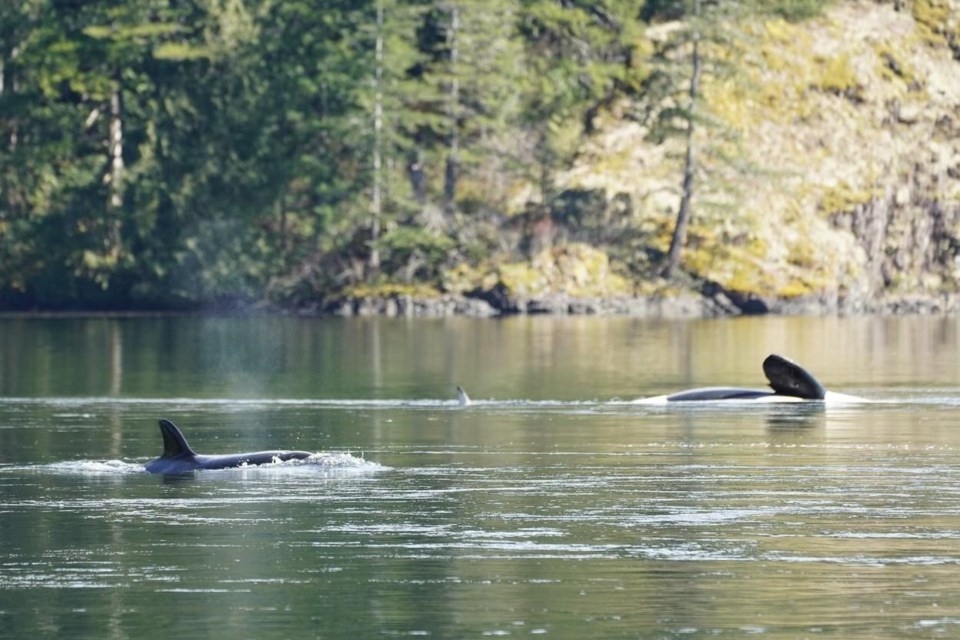ZEBALLOS, B.C. — Low tide kept rescuers trying to save an orphaned whale calf stranded near a remote British Columbia community off the waters on Saturday, but Fisheries and Oceans Canada said officials are re-evaluating techniques that have been used so far while deciding what's next.
An email from departmental spokeswoman Leri Davies said the most promising tool used so far to coax the young animal out of a lagoon off Vancouver Island appears to be Oikomi metal pipes from a line of vessels being used as a "sound wall."
The long metal pipes are partially lowered into the water and struck with hammers to create noise and direct the whale toward a narrow exit point, across a shallow sandbar and back to open ocean.
"The reality is that this is a highly complex operation, in a dynamic and dangerous natural environment, working with limited time frames to effect a rescue, and contending with shifting wind, rain and tidal conditions," Davies said.
"That said, the whale calf appears to be in good condition and monitoring of the whale’s health is ongoing."
Rescuers have said the whale has come close to leaving the lagoon but has been reluctant to pass over the sandbar where its mother got stranded and died last week.
Other methods that have been used so far include recorded whale calls, specialized directional guide lines and the pounding of Indigenous drum beats.
The two-year-old calf's mother died in the lagoon last weekend while local residents tried to free her. A necropsy of the 15-year-old Bigg's killer whale showed she was pregnant with a female fetus when she died.
Davies said scientists have been surprised by the way the calf has responded to sounds of the whale calls.
"In the past, underwater playback sounds have been highly effective as an attractant to move whales out of a potentially dangerous situation. For this whale calf … these proved to be repelling," the email says.
"Once this was observed, efforts were made to utilize the pod sounds to try to maneuver the whale calf towards the sand bar and open ocean, sadly without success."
Davies said the pipes are widely used to deter marine mammals away from oil spills.
The remoteness of where the calf is stuck, on the northwest tip of Vancouver Island near the small community of Zeballos, has presented its own set of challenges.
"The lagoon where the whale calf is trapped is even more remote and inaccessible," she said.
"To help mitigate this, the local road contractor stepped up by making its large equipment available to the operation, and the Ehattesaht First Nation and local community have established a makeshift boat ramp to facilitate on-water access to the lagoon."
This report by The Canadian Press was first published March 30, 2024.
The Canadian Press



